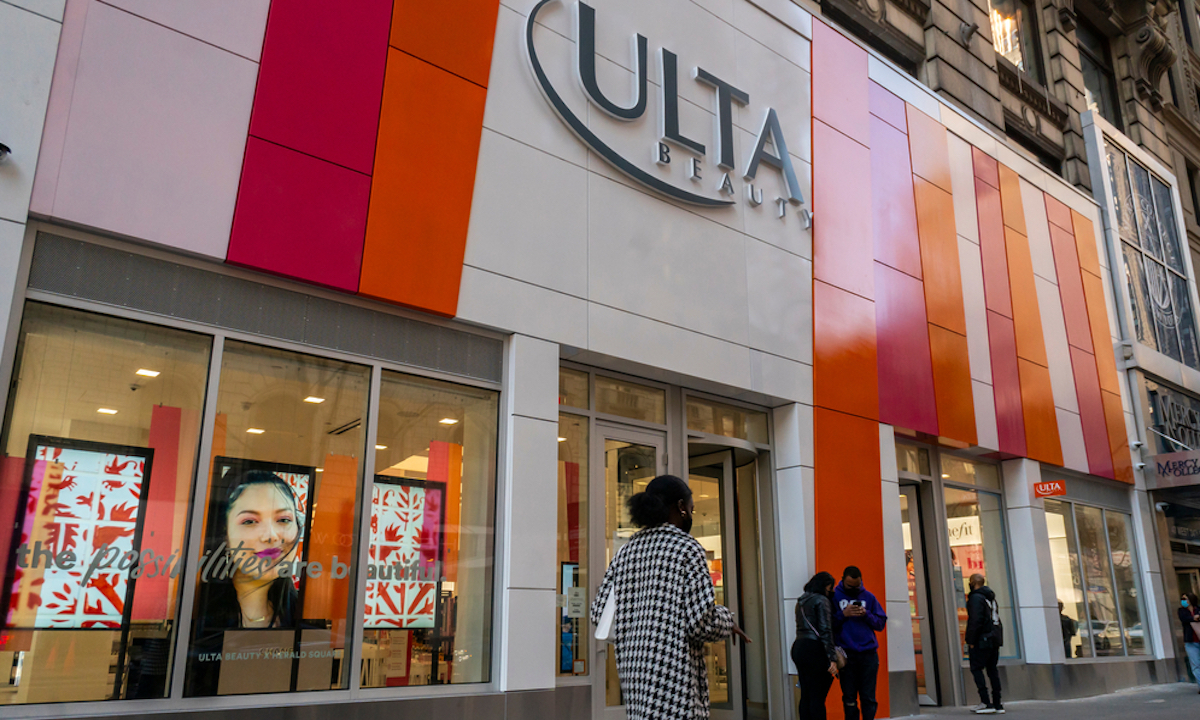
Surging in-store traffic led Ulta Beauty to strong second-quarter sales despite slowing eCommerce sales, as the beauty category recovers faster than executives expected.
“Our guests are demonstrating that brick and mortar is an important part of the beauty shopping experience, and we’re ecstatic to see traffic numbers coming back to the stores again,” said Chief Financial Officer Scott Settersten.
The Illinois-based beauty retailer said traffic levels are still below 2019 levels — though according to Placer.ai, foot traffic to Ulta locations was up over 20 percent in July compared to two years ago. eCommerce is also still double the levels reached in 2019; Ulta’s digital sales increased by more than 200 percent in the second quarter of 2020.
Dave Kimbell, who took over as Ulta Beauty’s CEO in June after Mary Dillon announced her retirement earlier this year, said that some shoppers have gone back to shopping only in-store after being forced online early in the pandemic, but most are continuing to shop “in an omnichannel way.” Buy online, pick up in-store (BOPIS) totaled 20 percent of eCommerce sales in the second quarter, and Kimbell said the retailer has made operational improvements to increase fulfillment speed, with 97 percent of orders ready for pickup within two hours.
“We believe that one of the lasting impacts of this disruption will be having a significant increase in our eCommerce business and our omnichannel behaviors,” Kimbell told analysts and investors on a conference call.
Related: Ulta Beauty CEO To End 8-Year Stint That Doubled Store Count And Tripled Sales
Officially, net sales increased by 60 percent year over year to $2 billion, with comparable sales up 56 percent compared to a 27 percent decline in the second quarter of 2020. Transactions at Ulta increased by nearly 53 percent and average ticket size increased by 2.5 percent. Compared to the second quarter of 2019, Ulta said comparable sales increased by just over 13 percent.
Launch Of Target Collaboration
The executives also touted the successful rollout of the first 58 Ulta shop-in-shops at Target, competing with Kohl’s introduction of Sephora shops that have also opened in recent weeks. By the end of the year, Ulta will have a presence in about 100 Target locations across the country, as well as on Target’s website.
Read more: Target, Ulta To Make ‘Prestige Beauty’ More Accessible With Shop-In-Shops
Kimbell said that while it’s only been 10 days since the first shop opened, consumer response has been “overwhelmingly positive,” especially around the ability to earn rewards through both the Target and Ulta programs when shopping at a shop-in-shop.
“We feel there is a very large opportunity for us to attract new loyalty guests into our program and get them engaged in the Ulta Beauty at Target experience, but then also introduce them to all things Ulta across all touchpoints,” Kimbell said
To be sure, as consumers began exiting their pandemic-era lifestyles earlier this year, competition in the beauty space increased as some of the largest retailers expanded their offerings. Online competition from Amazon and direct-to-consumer (D2C) brands is also putting increased pressure on Ulta. Settersten told analysts and investors, though, that the company remains confident in its ability to grow both its share of categories and share of consumer wallets.
“The beauty category is always highly competitive, and this is a disruptive time with a lot of changes,” he said. “We have a high level of respect for all of our competitors, but … we’re focused on playing offense and driving our business forward.”
Reaching Gen Z
Ulta is also leaning into social commerce capabilities in an effort to attract younger consumers. Last month, the company launched a partnership with livestream shopping app Supergreat to provide shoppable live videos and exclusive product drops. Kimbell said Ulta is early in the pilot with Supergreat, but “we’ve already seen encouraging results.”
The beauty retailer also worked with TikTok on a hashtag campaign to drive increased awareness of the Ulta brand. The company said the hashtag has amassed more than eight billion views to date, with 1.6 million videos created.
PYMNTS research has found that 44 percent of consumers who are highly connected in their social engagement are also highly connected shoppers. According to eMarketer, social commerce will account for 4.3 percent, or just over $36 billion, of retail sales this year.